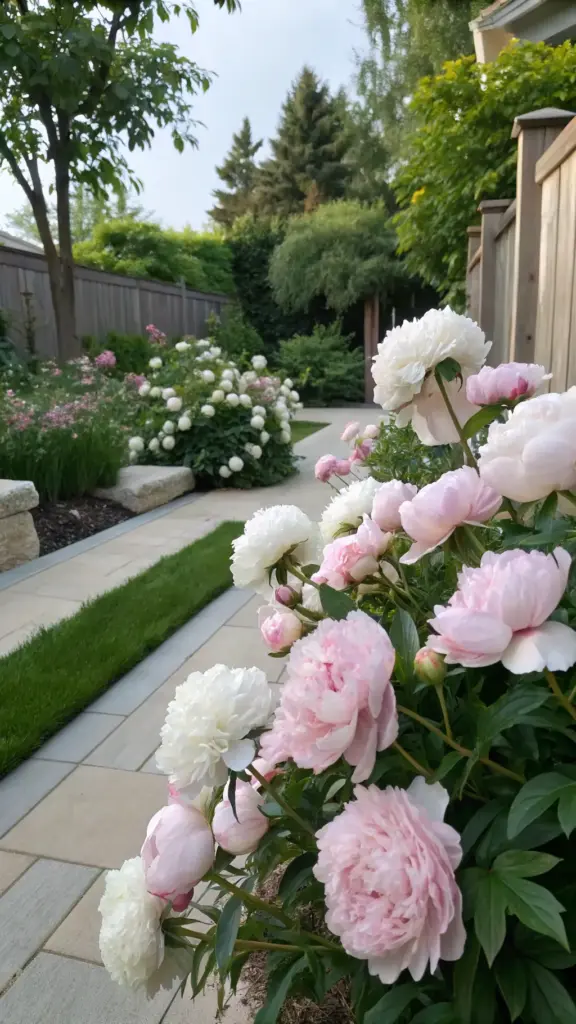4. Peonies: Elegant and Timeless Blooms

If there’s one flower that screams luxury and romance, it’s peonies. These lush, fragrant blooms are like the Audrey Hepburn of the floral world—timeless, sophisticated, and effortlessly beautiful. I’ll never forget the first time I included peonies in a bouquet. They transformed the entire arrangement from “nice” to “wow.” Let’s talk about why these beauties are so special and how you can grow and style them like a pro.
Why Peonies Are a Favorite for Luxury Floral Arrangements
Peonies have this magical ability to make any space feel instantly elegant. Their soft, ruffled petals and intoxicating fragrance make them a top choice for luxury floral arrangements. Whether you’re decorating for a wedding or just want to elevate your dining table, peonies bring a sense of opulence that’s hard to beat.
Here’s the thing: peonies aren’t just pretty faces. They’re also incredibly versatile. You can use them as standalone focal points or pair them with other blooms for a layered look. Personally, I love using them in bridal bouquets—they add a touch of romance that feels straight out of a fairytale.
Pro tip: If you’re buying peonies for arrangements, choose buds that are still closed but slightly soft. They’ll open beautifully over a few days, giving you maximum vase life. It’s like watching a flower bloom in real-time.
How to Grow Peonies in Different Climates (Including Tips for Colder Regions)
Now, let’s talk about growing peonies because, honestly, they’re worth the effort. The good news? Peonies are surprisingly hardy and can thrive in a variety of climates. That said, they do have some preferences.
For colder regions, peonies are actually a dream come true. They need a period of winter chill to bloom properly, so if you live somewhere with frosty winters, you’re in luck. Plant them in well-drained soil with plenty of sunlight, and they’ll reward you with years of blooms.
If you’re in a warmer climate, don’t worry—you can still grow peonies! Just opt for varieties like ‘Coral Charm’ or ‘Festiva Maxima’, which are more heat-tolerant. And here’s a little trick: mulch around the base to keep the roots cool during hot summers.
One thing to remember: peonies don’t like being moved. Once you plant them, leave them be. They’ll settle in and become perennial powerhouses, blooming year after year.
Pairing Peonies with Pastel-Colored Flowers for a Soft, Romantic Look
Peonies shine brightest when paired with other soft, romantic blooms. Think pastel roses, ranunculus, or baby’s breath. The result is a dreamy, ethereal vibe that’s perfect for weddings, baby showers, or even just brightening up your living room.
I once created a bouquet with blush pink peonies, pale lavender hydrangeas, and sprigs of eucalyptus. It was so stunning that my neighbor asked if I’d bought it from a high-end florist. Spoiler alert: I hadn’t.
For a modern twist, try pairing peonies with something unexpected, like succulents or dried grasses. The contrast between soft and structured adds an interesting dimension to your arrangements.
Caring for Peonies to Ensure Long-Lasting Blooms
To get the most out of your peonies, you’ve got to give them a little TLC. First, water them deeply but infrequently. Overwatering is the quickest way to kill these beauties.
When cutting peonies for bouquets, do it early in the morning when the blooms are still tight. Trim the stems at an angle and place them in lukewarm water with a dash of floral preservative. This trick helps them last longer and stay fresher.
And here’s a fun fact: ants are often found on peony buds. Don’t panic—they’re harmless and actually help the flowers open by nibbling away at the sticky sap. If you’re bringing peonies indoors, just give them a gentle shake to remove any uninvited guests.
Ready to explore another floral favorite? Click the next button below to discover the charm of cosmos—the low-maintenance bloom that’s perfect for adding a playful touch to your garden. Spoiler alert: they’re practically foolproof!









GIPHY App Key not set. Please check settings